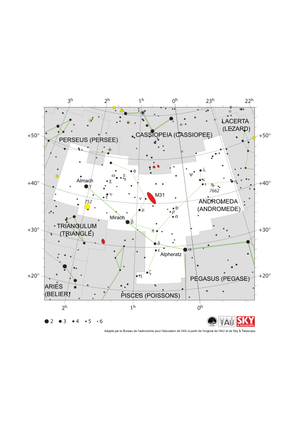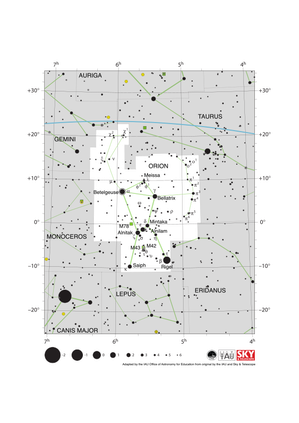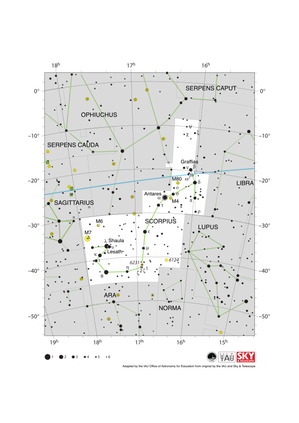Glossary term: Déclinaison
Description: Dans les systèmes de coordonnées équatoriales, la déclinaison est l'une des deux coordonnées utilisées pour spécifier la position d'un objet dans le ciel. Plus précisément, la déclinaison est la distance angulaire de l'objet par rapport à l'équateur céleste, communément mesurée en degrés : positive pour les objets de l'hémisphère nord, avec un signe négatif pour les objets de l'hémisphère sud. La déclinaison est ainsi analogue à la latitude géographique à la surface de la Terre. L'équateur céleste correspond approximativement à la projection de l'équateur terrestre sur la sphère céleste, mais les systèmes de coordonnées modernes, tels que le système international de référence céleste (ICRS), définissent l'équateur céleste sans référence à la Terre, en utilisant les positions d'objets célestes très éloignés dans le ciel comme référence.
Related Terms:
See this term in other languages
Term and definition status: The original definition of this term in English have been approved by a research astronomer and a teacher The translation of this term and its definition is still awaiting approval
The OAE Multilingual Glossary is a project of the IAU Office of Astronomy for Education (OAE) in collaboration with the IAU Office of Astronomy Outreach (OAO). The terms and definitions were chosen, written and reviewed by a collective effort from the OAE, the OAE Centers and Nodes, the OAE National Astronomy Education Coordinators (NAECs) and other volunteers. You can find a full list of credits here. All glossary terms and their definitions are released under a Creative Commons CC BY-4.0 license and should be credited to "IAU OAE".
If you notice a factual or translation error in this glossary term or definition then please get in touch.
Related Diagrams
Carte de la constellation d'Andromède
Credit: Adapté par le Bureau de l'astronomie pour l'éducation de l'AIU à partir de l'original de l'AIU/Sky & Telescope
License: CC-BY-4.0 Creative Commons Attribution 4.0 International (CC BY 4.0) icons
Crux Constellation Map
Credit: Adapted by the IAU Office of Astronomy for Education from the original by IAU/Sky & Telescope.
License: CC-BY-4.0 Creative Commons Attribution 4.0 International (CC BY 4.0) icons
Orion Constellation Map
Credit: Adapted by the IAU Office of Astronomy for Education from the original by IAU/Sky & Telescope
License: CC-BY-4.0 Creative Commons Attribution 4.0 International (CC BY 4.0) icons
Libra Constellation Map
Credit: Adapted by the IAU Office of Astronomy for Education from the original by IAU/Sky & Telescope
License: CC-BY-4.0 Creative Commons Attribution 4.0 International (CC BY 4.0) icons
Scorpius Constellation Map
Credit: Adapted by the IAU Office of Astronomy for Education from the original by IAU/Sky & Telescope
License: CC-BY-4.0 Creative Commons Attribution 4.0 International (CC BY 4.0) icons













